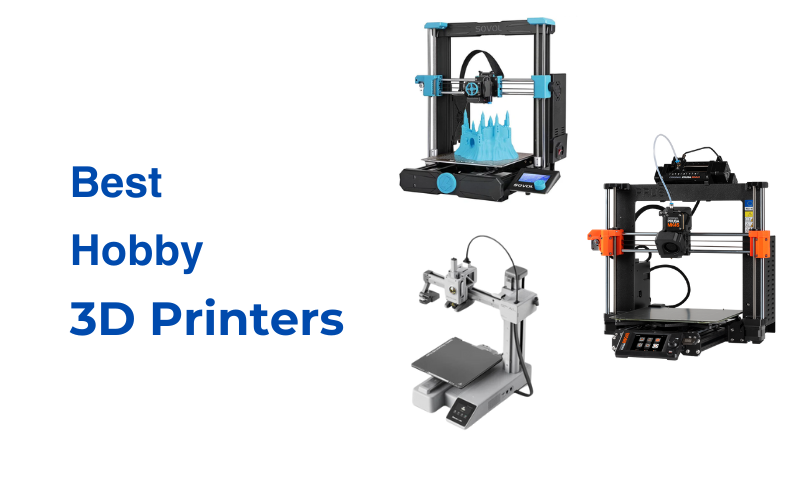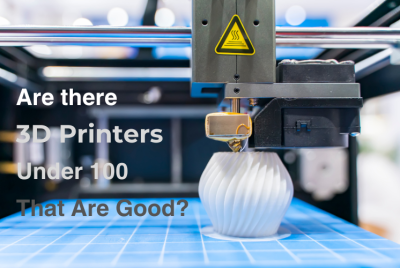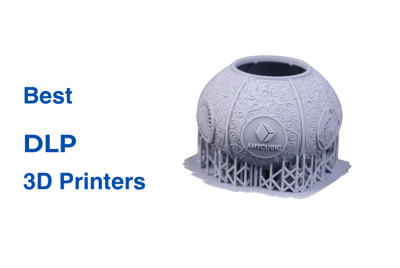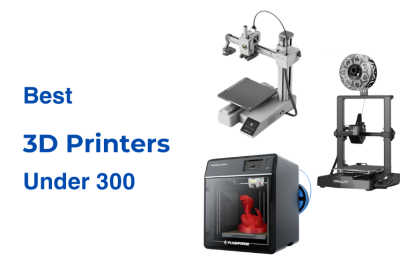Best Hobby 3D Printers
3D printing used to be something only professionals messed with. Engineers, researchers, and manufacturers used it for things like testing designs and building prototypes. The machines were big, pricey, and way too complicated for most people. It was all about industry and science—not something you’d see at home.
Now, things have totally flipped. 3D printers have gotten smaller, cheaper, and easier to use. These days, you can find a printer for almost anything—teaching kids, building medical tools, designing cool products, and yes, for having fun at home. What used to be reserved for big companies is now something anyone can try.
As a hobby, 3D printing has exploded. People are using it to make all kinds of things—miniatures, gadgets, replacement parts, even decorations. It’s perfect if you love hands-on projects and building stuff from scratch. And because the cost of printers has dropped, getting into 3D printing doesn’t break the bank. Free design software makes it even easier to jump in.
In this article, we’ll check out some of the best 3D printers for hobbyists. They’re affordable, reliable, and perfect for turning your ideas into real things.
Bambu Lab A1 Mini
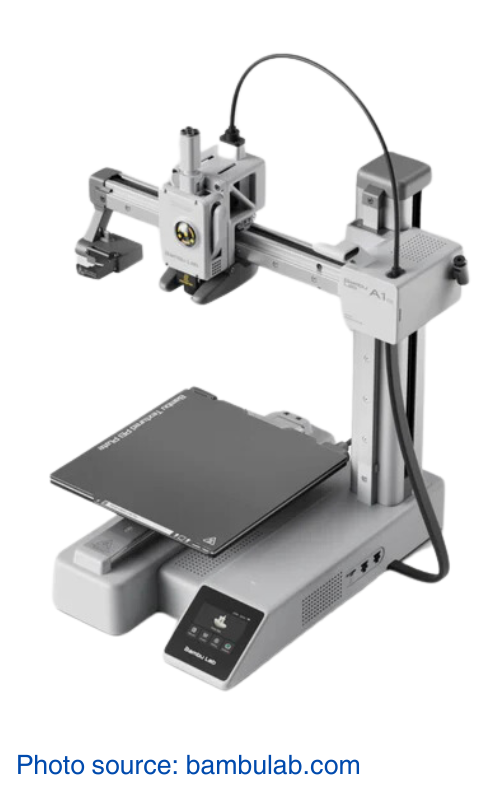
Why It’s the Pick:
- Comes pre-assembled—no setup headaches
- 180 x 180 x 180 mm build space
- Prints fast—up to 500 mm/s
- Auto bed leveling—no manual adjustments
- Runs quiet—good for home use
- Works with PLA, PETG, and more
The Bambu Lab A1 Mini is a solid choice if you want a fast, hassle-free 3D printer. It comes ready to go right out of the box, so you don’t have to mess with assembly. The build area isn’t huge, but it’s plenty for most hobby projects.
Speed is a big deal with this one. It prints up to 500 mm/s, way faster than most printers in this price range. That means you spend less time waiting and more time actually printing. It also has auto bed leveling, so you don’t have to waste time adjusting it before every print.
It’s quiet too, which is great if you’re printing at home. Plus, it handles different materials like PLA and PETG, so you can try out different types of prints. The touchscreen is easy to use, making it a good pick even if you’re new to 3D printing.
If you want something small, quick, and easy to use without spending a ton, the Bambu Lab A1 Mini is a great pick.
Sovol SV06
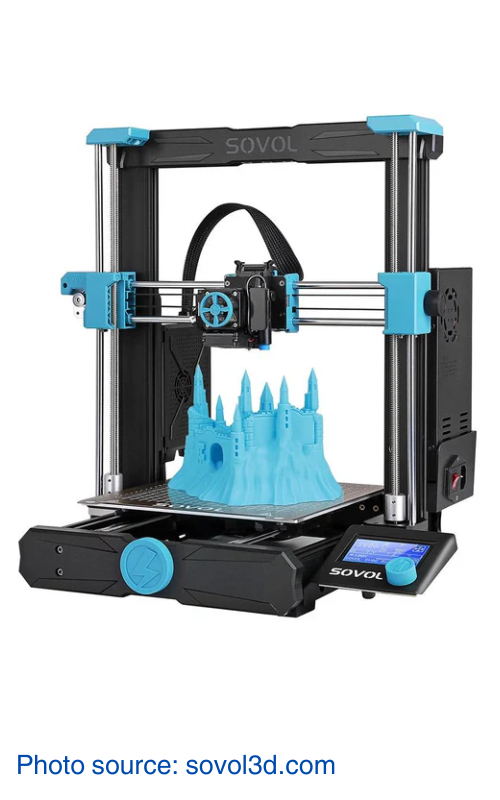
Why it’s the Pick:
- All-metal direct drive extruder
- 220 x 220 x 250 mm build space
- Prints up to 150 mm/s
- Automatic bed leveling
- Dual Z-axis for more stability
- Works with PLA, PETG, TPU, and more
The Sovol SV06 is a great pick if you want a printer with solid performance at a budget-friendly price. It comes with an all-metal direct drive extruder, which helps with better filament control—especially for flexible materials like TPU. The 220 x 220 x 250 mm build space gives you plenty of room to print bigger projects.
It also has automatic bed leveling, so you don’t have to waste time adjusting things before every print. The dual Z-axis setup keeps everything steady, which means fewer print failures.
Speed-wise, it’s not the fastest out there, but it gets the job done at 150 mm/s. It handles a variety of filaments, so you can try out different materials without issues.
If you’re looking for a budget printer that still delivers good results, the Sovol SV06 is a solid choice.
Bambu Lab P1P
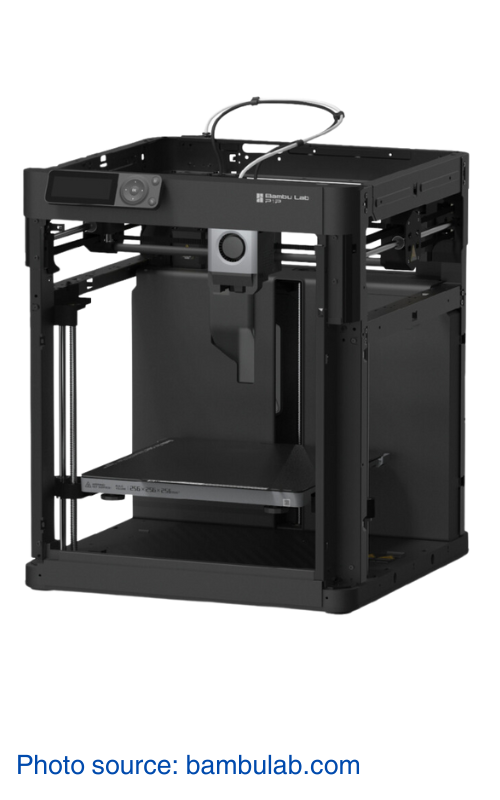
Why It’s the Pick:
- Prints up to 500 mm/s—super fast
- 256 x 256 x 256 mm build space
- Automatic bed leveling—no manual tweaks
- Direct drive extruder for better filament control
- Works with PLA, PETG, ABS, TPU, and more
- Open-frame design with customizable panels
The Bambu Lab P1P is a beast when it comes to speed. It prints up to 500 mm/s, which means you can finish projects in a fraction of the time compared to other printers. The 256 x 256 x 256 mm build space gives you plenty of room to print bigger parts without running out of space.
It has auto bed leveling, so you don’t have to mess with adjustments before every print. The direct drive extruder helps keep filament feeding smooth, which is especially useful for flexible materials like TPU.
Unlike the fully enclosed P1S, the P1P has an open-frame design, but you can customize it with printable panels. It handles a variety of filaments, from basic PLA to tougher stuff like ABS and PETG.
Elegoo Neptune 4 Pro
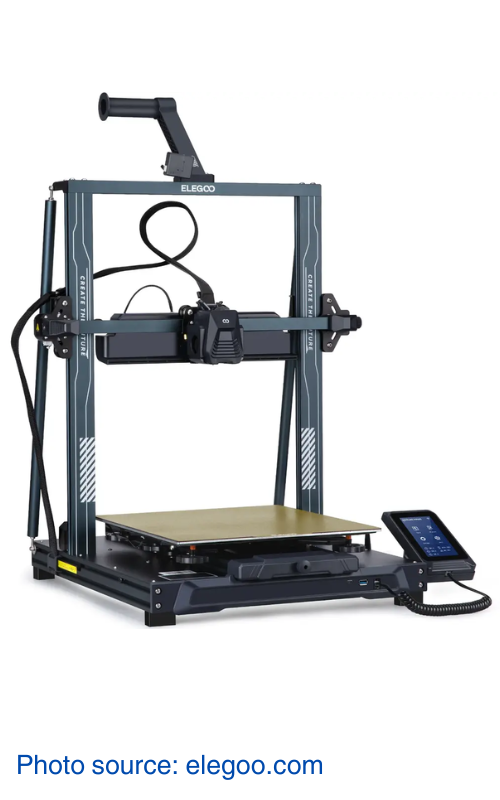
Why it’s the Pick:
- Prints up to 500 mm/s—fast for its price
- 225 x 225 x 265 mm build space
- Automatic bed leveling—no manual adjustments
- Direct drive extruder for smoother filament feeding
- Four-fan cooling system for better overhangs and details
- Works with PLA, PETG, TPU, ABS, and more
The Elegoo Neptune 4 Pro is a great pick if you want a fast printer without spending a fortune. With print speeds up to 500 mm/s, it keeps up with more expensive models while still being budget-friendly. The 225 x 225 x 265 mm build space gives you enough room for larger prints without taking up too much desk space.
It comes with automatic bed leveling, so you don’t have to waste time adjusting it every time you start a print. The direct drive extruder helps with smoother filament feeding, especially for flexible materials like TPU.
One of its best features is the four-fan cooling system, which helps with better overhangs and sharper prints. It handles a variety of filaments, making it a solid choice if you want to experiment with different materials.
Prusa MK4S
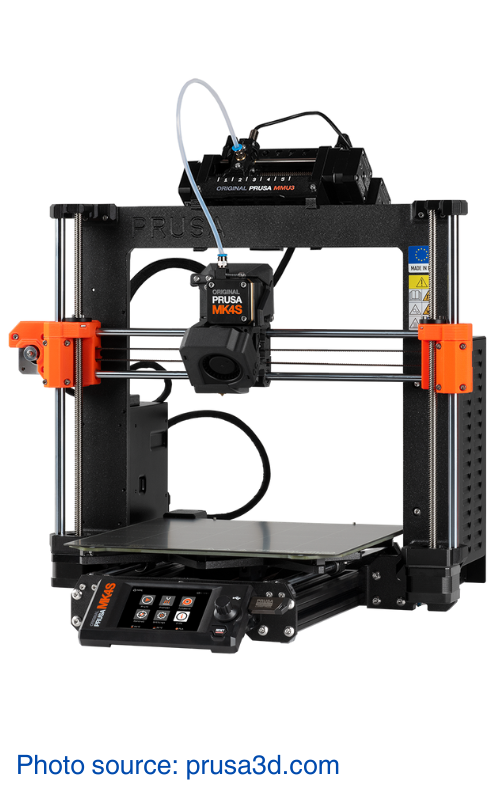
Why It’s the Pick:
- 250 x 210 x 220 mm build space
- Prints up to 200 mm/s
- Automatic bed leveling with Load Cell sensor
- All-metal direct drive extruder
- Quick-swap nozzles for easy upgrades
- Works with PLA, PETG, ABS, ASA, TPU, and more
The Prusa MK4S builds on the success of the MK3 series, bringing in smart upgrades while keeping the reliability Prusa printers are known for. It’s not the fastest printer out there, but it delivers high-quality prints with minimal fuss. The 250 x 210 x 220 mm build space gives you enough room for most projects without taking up too much desk space.
One of its standout features is the Load Cell sensor, which makes automatic bed leveling even more accurate. The all-metal direct drive extruder gives you better filament control, especially when printing flexible materials like TPU. Quick-swap nozzles make it easy to upgrade or replace parts without tearing down the hotend.
The MK4S works with a wide range of filaments, from standard PLA to heat-resistant ASA and ABS. It’s also backed by Prusa’s strong community support and open-source ecosystem, which means tons of printable mods and upgrades are available.
Final Thoughts
3D printing has come a long way from being something only professionals used. Now, there’s a printer for just about anyone, no matter the budget or skill level. Whether you want a fast machine like the Bambu Lab P1P, a budget-friendly pick like the Sovol SV06, or something with strong community support like the Prusa MK4, there’s plenty to choose from.
If you’re just getting started, the Bambu Lab A1 Mini or Elegoo Neptune 4 Pro are great choices since they’re easy to use and don’t require much setup. For those who want more control and flexibility, the Prusa MK4 and Bambu Lab P1P give you extra features and higher-end performance.
At the end of the day, the best 3D printer is the one that fits what you want to do. If you’re printing models, useful parts, or custom designs, these machines make it easy to turn ideas into real things.

